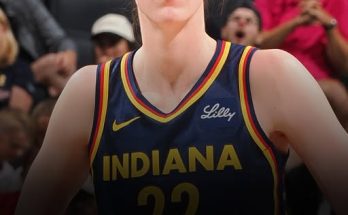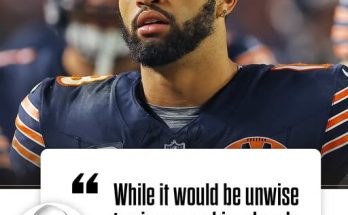Greg McElroy confirms a suspicion that has been surrounding the Alabama Crimson Tide’s quarterback situation all spring
Greg McElroy, the former Alabama quarterback turned college football analyst, has always had a unique lens through which he views the Crimson Tide. As someone who has been in the huddle at Bryant-Denny Stadium, led a team to a national championship, and studied the ins and outs of the game from behind a broadcast desk, McElroy’s perspective carries weight. That’s why when he recently addressed the quarterback situation at Alabama — a topic of intense speculation all spring — it sent ripples across the fan base and confirmed what many had already suspected.
For months, whispers have surrounded Alabama’s quarterback room. With Jalen Milroe returning after a 2023 season marked by dazzling highs and frustrating inconsistencies, the competition this spring has felt more open than at any other time in recent memory. Add in the arrival of a new offensive coordinator, Ryan Grubb, from Washington — who helped Michael Penix Jr. blossom into a Heisman finalist — and the questions became louder. Would Milroe remain the clear No. 1? Was the door open for Ty Simpson or even Dylan Lonergan to steal the job? Would Kalen DeBoer’s arrival, following Nick Saban’s retirement, usher in a new offensive vision that prioritized precision over athleticism?
Greg McElroy, speaking on his show and podcast recently, addressed these very concerns. And what he said didn’t just offer analysis — it confirmed the underlying uncertainty that’s been festering since January. According to McElroy, Alabama’s quarterback competition is wide open, and more importantly, Milroe may not be the ideal fit for the new system being installed by Grubb and DeBoer. While McElroy stopped short of declaring Milroe out of the picture, his commentary highlighted a mismatch between Milroe’s strengths and the kind of quarterback play Grubb typically builds his offense around.
This isn’t to say that Milroe hasn’t grown. Reports from spring camp indicate that his leadership has taken a leap, his command of the offense has improved, and his deep ball remains one of the most dangerous weapons in college football. But McElroy’s point wasn’t about raw ability — it was about stylistic fit. Grubb’s offense, as seen at Washington, relies heavily on timing, quick reads, and intermediate-to-deep accuracy from the pocket. Milroe, as electric as he is with his legs and deep throws, has struggled in the past with decision-making and quick processing, especially against complex defenses.
McElroy’s comments echoed what many inside the program have been murmuring: Alabama is trying to evolve offensively, and that evolution may require a different type of quarterback. Enter Ty Simpson, a former five-star recruit who has patiently waited for his turn. Simpson’s game leans more toward the traditional drop-back passer mold, and while he lacks Milroe’s dynamic athleticism, he’s shown flashes this spring of being more in sync with Grubb’s system. Dylan Lonergan, a younger player, has also reportedly impressed with his poise and accuracy, though he remains more of a long-term option than an immediate threat.
What makes McElroy’s analysis so poignant is the way it pulls back the curtain on how coaching changes can reset everything — even for returning starters. Under Saban, Milroe had a clearly defined path and expectations. With DeBoer and Grubb in charge, that path is less certain. McElroy emphasized that in Grubb’s system, pre-snap diagnosis and timing are non-negotiable. It’s not enough to be a playmaker when things break down; the quarterback has to be the catalyst for consistency, efficiency, and structure. And that’s not necessarily where Milroe shines most.
There’s also the NIL and transfer portal dimension to consider. If McElroy’s confirmation is taken seriously within the program and by Milroe’s camp, it could open the door for another twist in this saga. Would Milroe consider transferring if he feels the offense is no longer tailored to his skill set? Would DeBoer and Grubb entertain the idea of bringing in a transfer quarterback after spring, if the current options don’t inspire full confidence? These are the kinds of questions Alabama hasn’t had to grapple with often — but in the post-Saban era, everything is on the table.
Fans, for their part, have been split on Milroe since he took over the reins. His highlight-reel plays — the long runs, the off-platform deep bombs — have kept Alabama in games they might otherwise have lost. But the turnovers, the missed reads, and the inconsistency on third down have also been hard to ignore. It’s clear that Milroe has the talent to be a great college quarterback. The question McElroy poses, however, is whether that greatness can flourish in the specific system Alabama is now running.
The implications of McElroy’s comments stretch beyond the quarterback position. They underscore the growing pains that come with a regime change, even at a place as tradition-rich and talent-laden as Alabama. DeBoer and Grubb aren’t just tweaking the offense — they’re reshaping the identity of Alabama football. That means players who were fixtures last season may not be guaranteed the same roles moving forward. It’s a meritocracy now more than ever, and every position — especially quarterback — is under the microscope.
McElroy also pointed out that fans should be patient. Spring ball is about experimentation and growth, and decisions made in April aren’t always final. The coaching staff will use the A-Day spring game as a major data point, but fall camp will likely be where the real decision is made. Still, the direction of things seems clear: Alabama is looking for a quarterback who can win from the pocket, distribute the ball efficiently, and master the mental side of the game. If Milroe can become that player, the job will be his. If not, someone else will have the opportunity.
It’s not often that a former player speaks with such candor about his alma mater, but McElroy’s analysis is rooted in deep familiarity. He knows what it takes to win at Alabama, and he understands the pressure that comes with wearing that jersey. His words are not meant to tear down Milroe or hype up the competition — they’re meant to shine a light on a reality that many had already sensed. This quarterback competition is real, it’s tight, and it could shape the course of Alabama’s 2025 season.
As spring practice wraps up and fans gear up for A-Day, all eyes will be on the quarterback play. McElroy’s confirmation of the internal questions surrounding the position will add even more intrigue to every throw, every read, every audible. The bar is always high in Tuscaloosa, and the search for the next great Crimson Tide quarterback is well underway. Whether it’s Milroe, Simpson, Lonergan, or someone yet to arrive, Alabama needs a leader who fits the new vision — and who can carry the weight of expectations that never fade, even after the greatest coach in college football history walks away.



